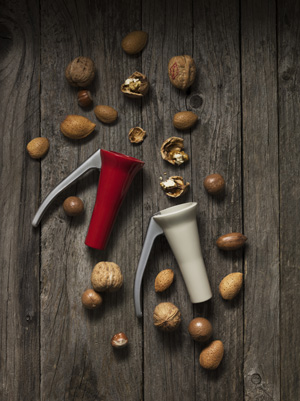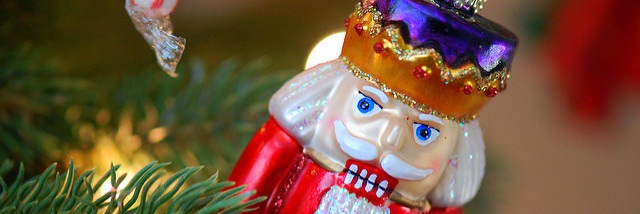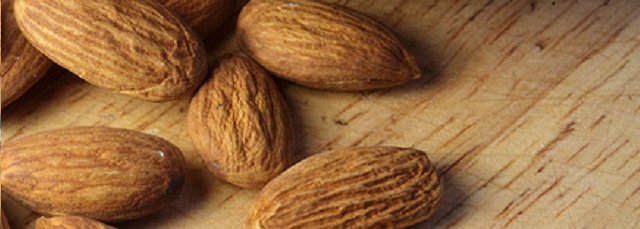“The Nutcracker sits under the holiday tree, a guardian of childhood stories. Feed him walnuts and he will crack open a tale…”
― Vera Nazarian, The Perpetual Calendar of Inspiration
There are things that no matter what time of the year it is, always remind us of Christmas. They make us want to go back to those cold December days when we gather around the Christmas tree and indulge in all kinds of amazing food. So when I think of these holy times I think of sparkling decorations, twinkling lights and roasting walnuts in the fireplace. And speaking of nuts, something that for sure is needed in order to enjoy their nutty goodness and is an indispensable part of the decoration on any Christmas table is THE NUTCRACKER.
This little, but a most useful tool, has for sure been a part of everyone’s childhood memories, no matter if it came with the classic, old-school design of a bearded soldier who cracks nuts with his mouth or a more modern version. We have all no doubt felt the excitement that comes with taking your time to break through a just roasted nut and then enjoy the sweet taste, munching away on its delicious content.

The Drosselmeyer Nutcracker. Visit our Shop
A brief history
The first tools used to crack nuts were just simple hammers or anvils, which were made of stone. There have been pieces of evidence found in Europe and the United States of people using pitted stones to crack nuts as far as the archaic period.
A Roman bronze nutcracker dated between 200 B.C. and 200 A.D. had been discovered in 1960 and could now be found in the Leavenworth Nutcracker Museum in the USA. It is known that nutcrackers existed in Europe during the 14-th and 15-th century. They were made from all kinds of materials like silver, iron, wood and even porcelain.
Brass- made nutcrackers were the most famous variation in England and in the USA – they preferred iron ones. In France, they were using boxwood, because of its fine grain to create beautiful nutcrackers often in the form of people or animals. During the Victorian era, nutcrackers were considered a conversation starter. People in that period were often using silver-plated ones, in order to open the nuts that have steadily been gaining popularity as a dessert around Europe at this time. It wasn’t up until 1800 when in Germany the classically-known to us wooden nutcracker appeared to be more commonly used.
During the 19-th century, nutcrackers became priced as souvenirs when their intricate designs and sentimental value significantly raised their worth. Around this time, the production of nutcrackers had a boom and they were even sold through special mail-ordered catalogs.
Around the world
“Don’t be afraid, my beard is long, my head is large, my look is grim but that matters not. I won’t bite you. In spite of my big mouth and grim appearance, I look with my heart for your happiness.”
– German folklore
In Germany, nutcrackers are a beloved gift. It is said that they bring good luck to your family and protect the home from evil spirits. An old story tells the myth behind how the whimsical wooden nutcracker that looks like a soldier came to be. The legend speaks of a farmer who offered to reward anyone who could help him crack a walnut that grew on his tree. A puppet- master came up with the idea of a doll with a mouth for a lever. It worked by lifting the lever – the mouth of the figurine and crushing the nut.
Sonneberg in Thuringia is the most famous home of the nutcracker carvings. Their wood-carving was the main industry until tourism took over.
During the Second World War, American soldiers coming back from the war made the decorative nutcracker know in the USA. The symbolism behind the little wooden figure and the enchanting design made the humble nutcracker not only a handy but also a really special and meaningful gift from the returning soldier to their families.
On 18-th of December 1982 Tchaikovsky’s ballet called “The Nutcracker” took over the world by a storm. The ballet was adapted from a story originally written by the German writer E. T. A. Hoffman called „Nussknacker und Mausekoönig” (“Nutcracker and Mouse King”). It was inspired by no other than the nut cracking soldier itself – a character, who gave the incentive behind the magical story about Marie Stahlbaum (or Clara in the Tchaikovsky’s version) and her beloved nutcracker.
How is the Nutcracker made?
Although many of the nutcrackers used for decoration are hand carved now a day it is a more common to use machines to do the work when it comes to the more commercial, everyday use of the tool. Also, the wooden material is often replaced by metals such as cast iron and steel for convenience and longevity.
The process starts when an iron ore (rocks and minerals from which metallic iron can be economically extracted) is dug out of a mine in pieces with various sizes. I order to make cast iron or steel the piece of ore should be about the 7-25 mm in diameter. Stainless steel that is needed for most of the handheld nutcrackers is made by melting the ore in a furnace. The pure iron sinks to the bottom and then chromium and nickel are added to create stainless steel. It can be shaped in many ways, like pouring it into molds or by cold stamping. The parts are hardened by a process called tempering where they are heated and cooled. The pieces have to pass quality control to ensure that they are all correct and there are no sharp edges. They are then assembled together to create the nutcracker. There is a protecting coating added. Many other materials like porcelain are used for decoration of the classic nutcrackers.
Wooden Nutcracker
Interesting facts about nutcrackers
- The first limited edition nutcracker piece was King Ludwig II. Only 3000 pieces were made.
- The largest private nutcracker collection belongs to a German family – the Löschner Family and contains 4334 pieces.
- Figurines carved by Junghanel, Klaus Mertens, Karl, Olaf Kolbe, Petersen, Christian Ulbricht and the Steinbach nutcrackers have become a famous collector’s item.
- The multi-instrumentalist Mike Oldfield had used the sound made from a nutcracker in his music.
- Did you know that the mouth of many animals is actually a natural nutcracker? There is also a bird called – the Nutcracker.
- The first nutcrackers created mainly in the famous village of Erzgebirge represented figures like kings, politicians, military, and representatives of the upper echelons.
- It takes about 130 work steps to create a nutcracker made of wood.
- The tallest operating nutcracker is 10.1 m [33 ft]. It is capable of crushing even coconuts.
- A spring-joined nutcracker was patented in 1913 by Henry Quackenbush.
- In olden times it was a tradition to put a nutcracker in children’s stocking for Christmas.
Image Copyright: Steve Snodgrass, CC BY 2.0



